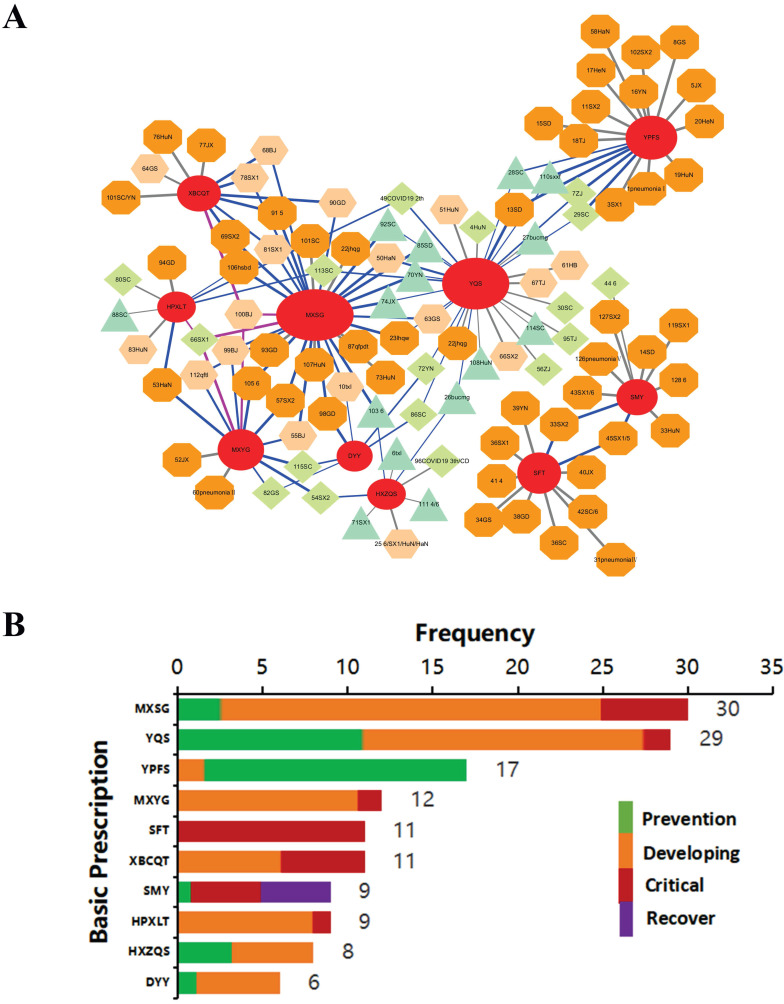Figure 2.
The lineage of the originals to their derivatives with applied courses of the most commonly based recipes. (A) A total of 130 basic recipes were extracted from 185 clinically applied recipes, according to TCM composition principles, with numbers assigned from 1 to 130 (the complete dataset is in Table S3). The relational network of the top 10 basic recipes and clinical TCM remedies are shown there. The red oval hubs represent original core recipes, which are labeled with acronyms, e.g., MXSG means Maxingshigan Decoction. The surrounding circles are derivatives arranged by similarity to their basic recipe (20%-100%), where deep orange octagon (100%), thin orange hexagon (75-100%), green diamond (50-75%), and turquoise triangle (<50%). The color of the connecting line represents the combination of basic recipes: gray for single, blue for two, and purple for three combined recipes. Those remedies applied in COVID-19 were named as described below. (1) The regional abbreviation was named after the number; for instance, 51HaN indicates recipe #51 from Hainan Province. (2) If the recipe was issued from a certain version (X) of the treatment protocol issued from the National Health Commission (NHC), X is added, such as 41 4. (3) Multiple origins are all shown with '/', such as 25 6/SX1/HuN/HaN. (4) Lowercase abbreviation represents other features, except regions and version number, including clinical effective recipes from individual or local application, such as 10txl from one expert, whose name is Tong Xiaolin, or 87qfpdt (Qingfeipaidu Decoction), the effective clinical recipe with more than 90% curative rate, etc. (5) Agreed COVID-19 prescriptions from some hospitals were translated following their meanings, e.g., 1 pneumonia I. (B) The top 10 basic recipes were categorized as applied courses, e.g., early-preventive (green), mild-moderate-developing (orange), severe-critical (red), and recovery stage (purple). The number indicates the frequency among all recipes. The counts within 4 stages of those top 10 basic recipes are shown in Table 1.

